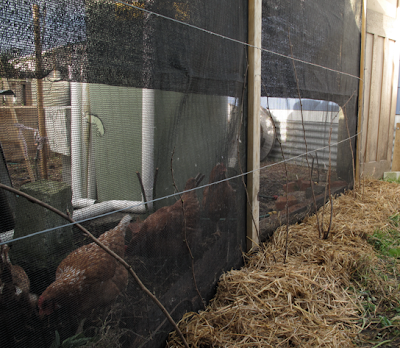The last two columns engaged in a slightly higher discussion
of a number of fundamental ecological design strategies. Those strategies –
called multiple functions and redundancy by permaculturists – are important to
eco-thrifty design and to emergency preparedness.
These are by no means new ideas. Who was it that first said,
“Don’t put all your eggs in one basket”?
Diversity creates robust ecosystems. It makes strong
communities. And it is essential for resilient households in times of emergency
and in times of energy and food inflation. Over the last decade, electricity
rates have doubled, and there is little reason to suspect that they will not
double again in another 10 years.
The feedback that we get consistently about the educational
component of our project is that we offer practical examples of all our design
principles. For instance, one mum who came along with the Wanganui Home
Educators Group on one of their six site visits in June had sent this email:
“A few weeks ago, my family and
I visited your house with the WHEG and learnt a lot of helpful energy-saving
tips from you. Even though the visit was informal, the presentation was
thorough and children of all ages (and adults) could go home with a lot of
information to think about and put into practice. It was simple, yet practical
and inspiring. Our own home is fairly new and so we already had many of the
energy-saving things in place, but through your talk we were made aware of
certain things again - our one south facing room does not get its
curtains opened for very long at the moment!”
We also got this feedback from
some of the children:
“When we went to the Eco House
I learnt how to keep our house warm by the sun. It was a fun visit!
Mum and I are going to buy some woolen blankets for our windows and it is
really fun to cook pasta in a box!”
Bethany, aged 8
“I really enjoyed our visit to
the Eco House. I learnt that bricks keep in a lot of heat.”
Nathanael, aged 9
I got similar comments about the slide presentation on 5th
of August at the Quaker Meeting House. It is nice to receive such feedback
because one of the multiple functions of our eco-thrifty renovation is as an
educational project. We have also worked with a number of local and regional
schools on a cross-curricular unit called, The Little House That Could. (Funding was provided by Wanganui District Council,
and an administrative role was played by the Sustainable Whanganui Trust.)
In the space that remains this week I’ll give one more
example of the design principles mentioned above, only with a biological twist.
Last week I was helping Mark Christensen transplant raspberries, and he sent me
home with two dozen plants of various types: summer-bearing, autumn-bearing,
and thorn-less.
Regarding multiple functions, the photograph shows the
raspberries planted in front of wind netting. For its part, the wind netting
serves its primary function – breaking wind! – but is also a chook fence and
partial view screen for our semi-cluttered side yard. The posts that hold up
the netting also support the galvanized wire that will trellis the raspberries.
And finally, the raspberries will serve their primary function – in my belly –
but also screen the side yard and shade the wind netting from the sun, which
will prolong its lifespan.
In terms of redundancy, I’ve planted the different varieties
of raspberries in different locations around the section. After all, I don’t
know the best place to plant them. Only they can tell me that.






No comments:
Post a Comment